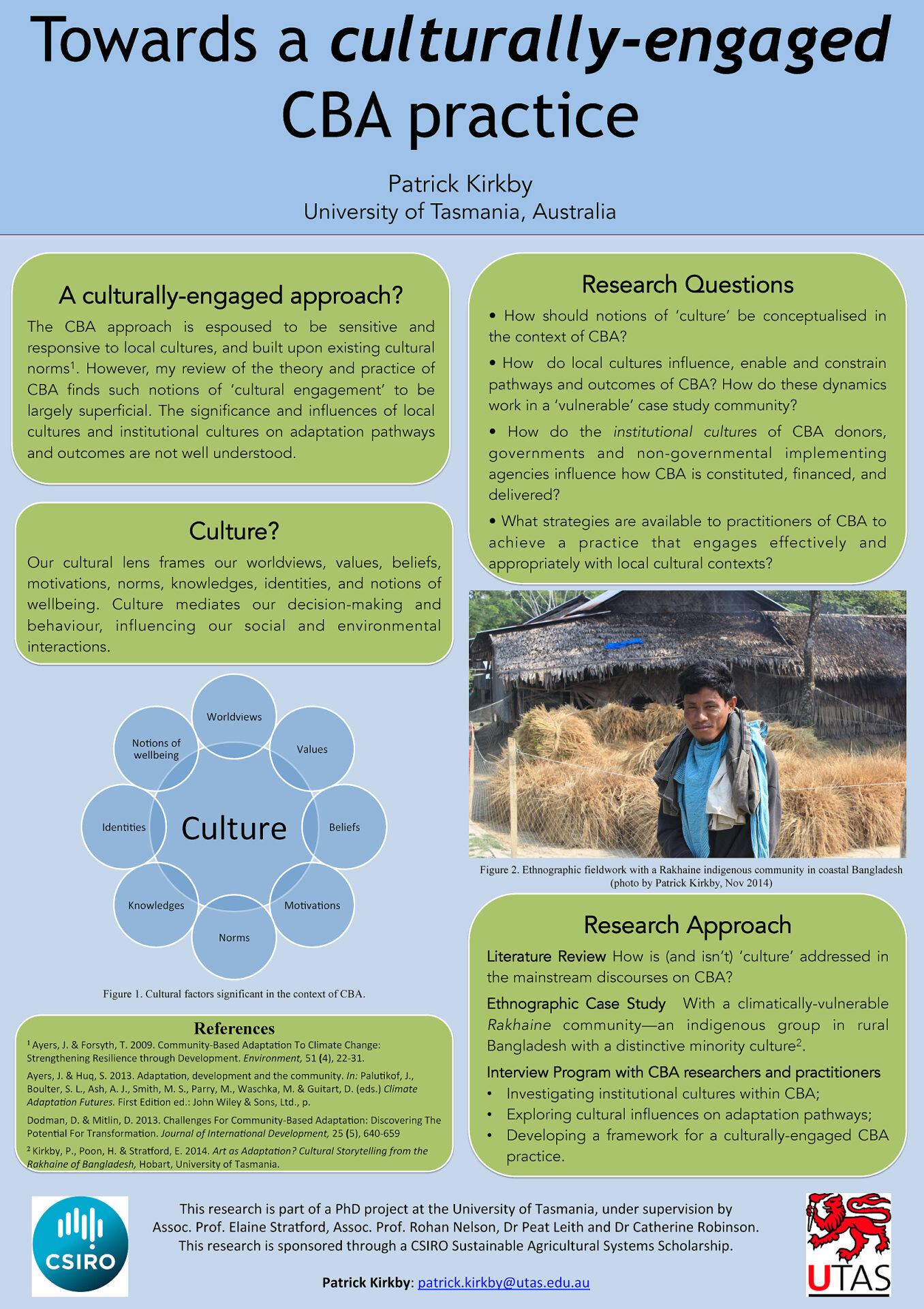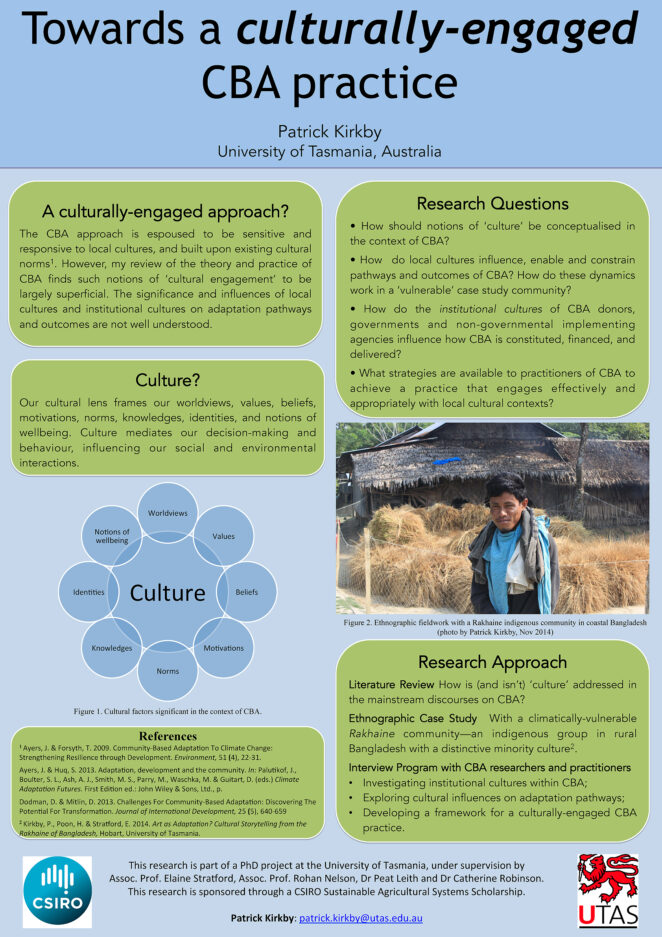Case-study /
Towards a Culturally-engaged CBA Practice


Click to enlarge.
Introduction
The CBA approach is espoused to be sensitive and responsive to local cultures, and built upon existing cultural norms. However, my review of the theory and practice of CBA finds such notions of ‘cultural engagement’ to be largely superficial. The significance and influences of local cultures and institutional cultures on adaptation pathways and outcomes are not well understood.
Research Questions
• How should notions of ‘culture’ be conceptualised in the context of CBA?
• How do local cultures influence, enable and constrain pathways and outcomes of CBA? How do these dynamics work in a ‘vulnerable’ case study community?
• How do the institutional cultures of CBA donors, governments and non-governmental implementing agencies influence how CBA is constituted, financed, and delivered?
• What strategies are available to practitioners of CBA to achieve a practice that engages effectively and appropriately with local cultural contexts?
What is culture?
Our cultural lens frames our worldviews, values, beliefs, motivations, norms, knowledges, identities, and notions of wellbeing. Culture mediates our decision-making and behaviour, influencing our social and environmental interactions.
Poster Contact:
Poster produced by Patrick Kirkby, University of Tasmania, Australia
This poster is one of the posters featured at the 9th International Conference on Community-Based Adaptation (CBA9) which took place in Nairobi, Kenya, from April 24-30 2015. The CBA series of conferences focus on the latest developments in community-based adaptation to climate change. The theme of this year’s event was “Measuring and enhancing effective adaptation”, and all the posters presented at the conference were summaries of projects related to the conference theme. For more information about CBA9, visit: www.cba9.org. If you want to learn more about community based adaptation, please visit the GICBA platform on weADAPT.
